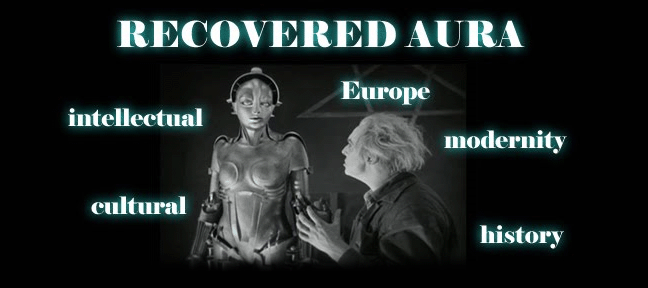In Xanadu did Kubla Khan
A stately pleasure-dome decree :
Where Alph, the sacred river, ran
Through caverns measureless to man
Down to a sunless sea.
So twice five miles of fertile ground
With walls and towers were girdled round :
And there were gardens bright with sinuous rills,
Where blossomed many an incense-bearing tree ;
And here were forests ancient as the hills,
Enfolding sunny spots of greenery.
But oh ! that deep romantic chasm which slanted
Down the green hill athwart a cedarn cover !
A savage place ! as holy and enchanted
As e'er beneath a waning moon was haunted
By woman wailing for her demon-lover !
(click here for rest of the poem)
The images of a cave and of magical powers emanating from the earth are ones repeated throughout the aesthetics of Romanticism. I would argue that there are two reasons for this. First, the cave represents the hidden, dark and irrational forces of life. The words chthonic and telluric are sometimes used by literary critics to describe this sense of the undergound as a source/site of hidden power. Chthonic means relating to the gods of the underworld and telluric relating to the earth. Second, the cave is a passage-way into the earth and, for the Romantics, the earth takes on a special meaning in terms of creativity and also nationalism. In this period the Germans begin to use the phrase "blood and soil" to describe their spiritual connection to the land. Following Goethe's lead, Wagner creates a singing role for Erda, the earth goddess, in his Ring Cycle. As nationalism becomes an increasingly important component of 19th C. politics, poets, artists and passionate patriots employ Romantic tropes of all kinds to show how "their folk" are authentically related to the land they occupy. The term autochthonic is used to describe this particular sort of appeal to being "native sons".
Take a peek at these caverns related to Romanticism.
Mad King Ludwig was so in love with Wagner's opera Tannhausser he had a grotto similar to the one in the opera created inside the castle itself. Here he could float around in a giant swan boat by candle-light, lost in his dreams and fantasies.
This is a clip from the film Ludwig (1972) by Luchino Visconti, showing the Mad King hovering in a rather fevered state about his magic grotto.
 The Venusberg is a magic mountain (with an underground grotto) in German folklore. Here mortal men cavort with sensuous water nymphs reigned over by Venus herself. The story is an amalgamation of Teutonic legend and Roman myth. The Venusberg is a major focal point of Wagner's opera Tannhauser. Above is a 1990's Metropolitan Opera production of the opera. The Venusberg and other episodes featuring the femme fatale are found throughout Romantic litertaure and art. As we will see this image of dangerous female sexuality becomes a dominant theme in the late 19th and early 20th C. Female power gets identified with the Freudian unconscious and the inhuman forces of nature, sex and death.
The Venusberg is a magic mountain (with an underground grotto) in German folklore. Here mortal men cavort with sensuous water nymphs reigned over by Venus herself. The story is an amalgamation of Teutonic legend and Roman myth. The Venusberg is a major focal point of Wagner's opera Tannhauser. Above is a 1990's Metropolitan Opera production of the opera. The Venusberg and other episodes featuring the femme fatale are found throughout Romantic litertaure and art. As we will see this image of dangerous female sexuality becomes a dominant theme in the late 19th and early 20th C. Female power gets identified with the Freudian unconscious and the inhuman forces of nature, sex and death. Cave and Bridge in the Moonlight, oil on canvas, Joseph Wright of Derby, late 18th C.
Cave and Bridge in the Moonlight, oil on canvas, Joseph Wright of Derby, late 18th C.Wright of Derby is one of the forefathers of Romantic painting. His pictures feature all of the themes we have come to identify with the movement: the wildness of nature, ruins and medievalism, the sublime and the magical, the hero and the maiden.
 Exploration of the wonders both on and under the earth becomes a major theme of 19th C. literature. Darwin's voyages and the fantastic travelogues of Jules Verne's fiction are just two examples. The image of the explorer standing in front of some spectacular natural wonder (as we saw in C. D. Friedrich's paintings) is also widely seen in Romantic representation.
Exploration of the wonders both on and under the earth becomes a major theme of 19th C. literature. Darwin's voyages and the fantastic travelogues of Jules Verne's fiction are just two examples. The image of the explorer standing in front of some spectacular natural wonder (as we saw in C. D. Friedrich's paintings) is also widely seen in Romantic representation.An excellent new book which thoroughly explores this is Richard Holmes'
The Age of Wonder: How the Romantic Generation Discovered the Beauty and Terror of Science.
One of the most famous sites of the Romantic period is Fingal's cave in the Scottish Hebrides.
It became a popular tourist attraction in the Victorian period. Romantics made much of its spectacular natural beauty and its frequent appearance as a site of magical happenings in the myths of Scotland. The most famous Romantic incarnation of this site is musical: Felix Mendelssohn's Hebrides Overture Op. 26, popularly known as The Fingal's Cave Overture. I've included a recording of it below, as well as actual footage of the cave.






No comments:
Post a Comment